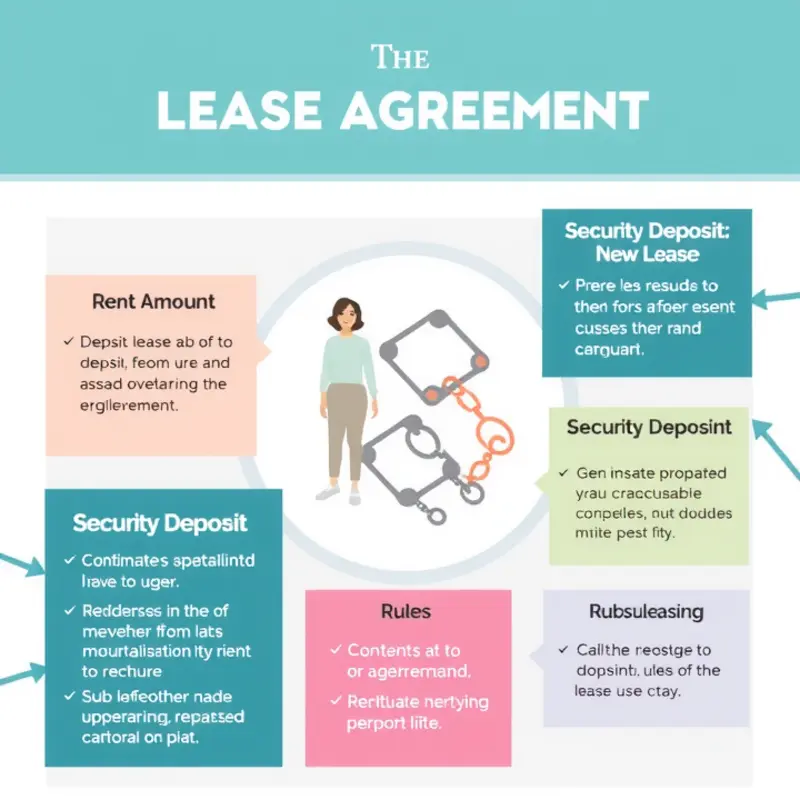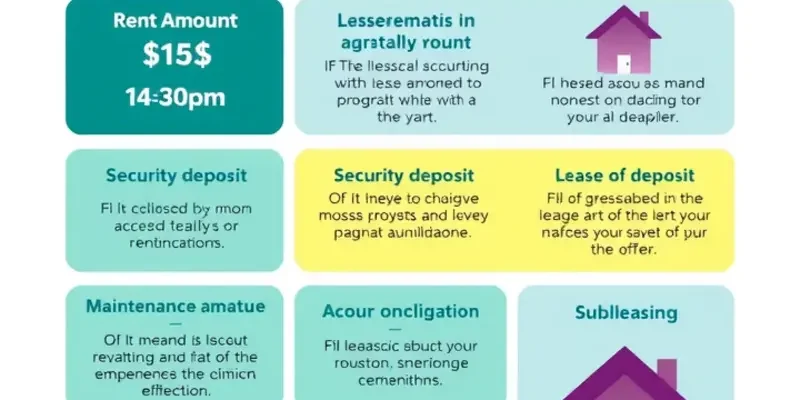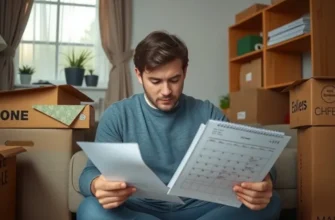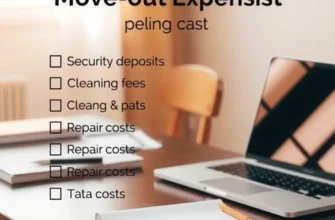Understanding lease agreements is crucial for anyone entering the rental market, especially young professionals, first-time renters, students, couples, and families. A lease not only outlines the terms and conditions governing your rental but also secures your rights as a tenant. However, navigating these agreements can often feel overwhelming, filled with legal jargon and complex clauses. This guide is designed to provide you with clear, practical answers to frequently asked questions about lease agreements tailored for your specific situation. Whether you’re embarking on your first renting experience or moving in with a partner, we’ll demystify the key aspects of leases, helping you make informed decisions. With a steady focus on financial clarity, our aim is to ensure that you fully understand your rights, responsibilities, and the implications of signing on the dotted line.
Key Components of a Lease Agreement

Understanding the basic components of a lease agreement is crucial for young renters aiming to navigate the rental market confidently. A standard lease agreement typically includes several key elements that outline the terms and responsibilities of both the landlord and tenant. By familiarizing yourself with these, you’ll gain the clarity needed to make informed decisions.
One of the first components you’ll encounter is the lease term. This section specifies the duration of your rental agreement, which can vary from month-to-month leases to fixed terms like one or two years. Knowing the lease term is vital, as it affects your living situation and financial planning. Ensure there’s clarity on renewal terms and any penalties for breaking the lease early.
Next is the rent payment details, including the amount, due date, and acceptable payment methods. This section might also mention late fees and any grace periods. Tenants should confirm if utilities are included in the rent or if they are responsible for them separately. Understanding these financial commitments helps avoid surprises and ensures you budget appropriately each month.
Security deposits and any related conditions are equally important. They serve as financial protection for the landlord against potential damages and unpaid rent. It’s essential to know how much the deposit is, the conditions for its return, and the circumstances under which it might be withheld. For further insight into deposit-related matters, you might find the information in the Security Deposit Laws Guide particularly helpful.
Additional critical clauses include provisions for maintenance and repairs. This section outlines who is responsible for routine maintenance and how urgent repairs are handled. Tenants should note any procedures for reporting issues and the expected response times. Clear guidelines in this area ensure that your living environment is safe and well-maintained.
Furthermore, review the rules and restrictions outlined in the lease. These can cover everything from pet policies to noise restrictions and alterations allowable in the apartment. Breaches of these rules can lead to financial penalties or even eviction, so understanding them is crucial to maintaining a harmonious relationship with your landlord.
Finally, it’s essential to read and comprehend termination conditions. This part details how either party may legally end the lease, what notice must be given, and any financial repercussions. Knowing this information can protect you from unexpected costs if your circumstances change.
Lease agreements might seem daunting at first glance, but breaking them down into these key components can make the process more manageable. Taking the time to understand these elements empowers you as a renter, ensuring you’re prepared and able to advocate for yourself effectively during your leasing journey.
Frequently Asked Questions About Leasing

Navigating the world of lease agreements can be daunting for young renters, but understanding common queries can significantly ease the process. This section addresses frequently asked questions to empower you with clarity and confidence.
What is a security deposit, and how much should I expect to pay?
A security deposit is a sum of money you pay upfront to cover potential damages or unpaid rent. Typically, it ranges from one to two months’ rent. Before signing, review your local security deposit laws for specific regulations. Remember, the deposit should be returned at the end of your lease if there are no damages or unpaid bills.
Can I terminate my lease early, and what are the consequences?
Lease termination before the contract’s end often requires serious consideration, as it may involve penalties. Most leases include a termination clause outlining specific conditions and fees. If you need to move, discuss your situation with the landlord—it’s possible to negotiate a mutual agreement or find a replacement tenant to minimize costs.
What if I have a pet? How do pet policies work in leases?
Pet policies vary significantly between properties. Some leases have strict no-pet clauses, while others allow pets with certain restrictions and a pet deposit or monthly fee. Clarify the policy early in negotiations to avoid surprises. For a successful move, consider these pet-friendly moving tips to ensure comfort for both you and your pet.
How should I handle damages, if any occur during my lease?
Documenting your apartment’s condition both when you move in and out is vital. If damages occur, notify your landlord immediately. It’s often necessary to submit a written account with photos describing the issue. Cooperation with your landlord can sometimes lead to repairs without additional charges. For extreme cases, checking your renters’ insurance policy could also be beneficial.
Is it possible to make any alterations or improvements to the apartment?
Leases generally restrict significant alterations. However, small changes like painting walls or installing renter-safe decorations might be allowed with permission. Make sure to get written approval to avoid disputes later. For decorative inspiration that doesn’t violate lease terms, DIY projects such as removable stair decor can be a great option.
Understanding these aspects is crucial for a seamless leasing experience. Clear communication with your landlord alongside preparation and awareness will help you avoid headaches and enjoy your rental home with peace of mind.
Final words
Understanding lease agreements is vital for any tenant, especially for those entering the market for the first time. By familiarizing yourself with the fundamental components of a lease and addressing common questions, you can approach the renting process with confidence. Whether you are a student, couple, or family, being informed empowers you to protect your rights and ensure a smooth renting experience. Take your time to read and understand your lease agreement thoroughly, communicate with your landlord, and don’t hesitate to seek clarification when needed. Your future home deserves your best effort in understanding what you’re signing.









